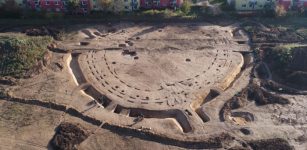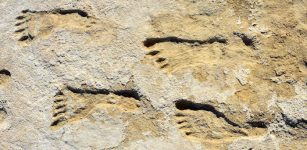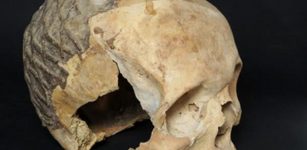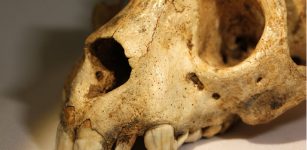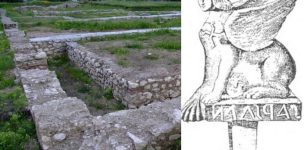Genetic Evidence Retrieved From 800,000-Year-Old Human Tooth
Conny Waters – MessageToEagle.com – For the first time, researchers have retrieved genetic information from an 800,000-year-old human tooth, and data sheds light on one of the branching points in the human family tree, reaching much further back in time than previously possible.
The tooth belonged to the hominin species Homo antecessor.
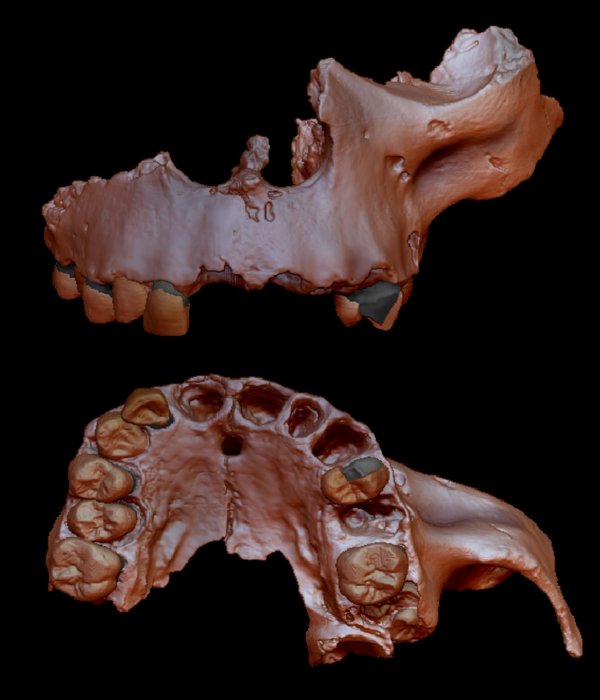
Digital reconstruction of specimen ATD6-69 from the Homo antecessor collection. Computerized microtomography (micro-CT) techniques were used to perform this reconstruction. Credit: Prof. Laura Martín-Francés
“Ancient protein analysis provides evidence for a close relationship between Homo antecessor, us (Homo sapiens), Neanderthals, and Denisovans. Our results support the idea that Homo antecessor was a sister group to the group containing Homo sapiens, Neanderthals, and Denisovans,” says Frido Welker, Postdoctoral Research Fellow at the Globe Institute, University of Copenhagen, and first author on the paper.
Using mass spectrometry, researchers sequenced ancient proteins from dental enamel, and confidently determined the position of Homo antecessor in the human family tree. Then, using the new molecular method, palaeoproteomics, they retrieved molecular evidence to accurately reconstruct human evolution from further back in time than ever before.
The human and the chimpanzee lineages split from each other about 9-7 million years ago. Scientists have relentlessly aimed to better understand the evolutionary relations between our species and the others, all now extinct, in the human lineage.
“Much of what we know so far is based either on the results of ancient DNA analysis or on observations of the shape and the physical structure of fossils. Because of the chemical degradation of DNA over time, the oldest human DNA retrieved so far is dated at no more than approximately 400,000 years,” says Enrico Cappellini, Associate Professor at the Globe Institute, University of Copenhagen, who led the study.
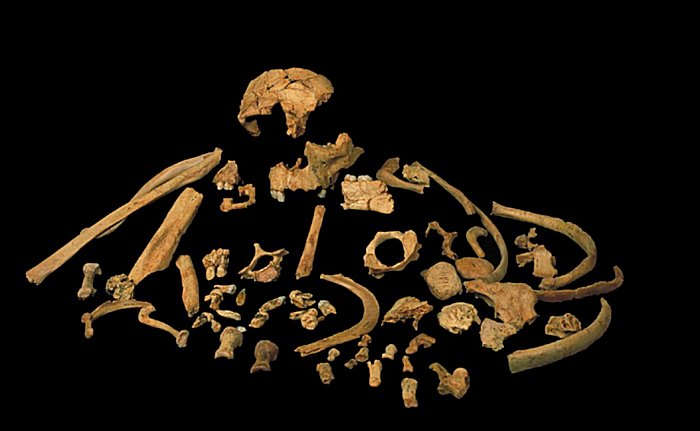
Skeletal remains of Homo antecessor. Credit: Prof. José María Bermúdez de Castro
The fossils analyzed by the researchers were found by palaeoanthropologist José María Bermúdez de Castro and his team in 1994 in stratigraphic level TD6 from the Gran Dolina cave site, one of the archaeological and paleontological sites of the Sierra de Atapuerca, Spain.
Initial observations led to conclude that Homo antecessor was the last common ancestor to modern humans and Neanderthals, a conclusion based on the physical shape and appearance of the fossils. In the following years, the exact relation between Homo antecessor and other human groups, like ourselves and Neanderthals, has been discussed intensely among anthropologists.
Although the hypothesis that Homo antecessor could be the common ancestor of Neanderthals and modern humans is very difficult to fit into the evolutionary scenario of the genus Homo, new findings in TD6 and subsequent studies revealed several characters shared among the human species found in Atapuerca and the Neanderthals.
New studies also confirmed that the facial features of Homo antecessor are very similar to those of Homo sapiens and very different from those of the Neanderthals and their more recent ancestors.
“I am happy that the protein study provides evidence that the Homo antecessor species may be closely related to the last common ancestor of Homo sapiens, Neanderthals, and Denisovans. The features shared by Homo antecessor with these hominins clearly appeared much earlier than previously thought. Homo antecessor would therefore be a basal species of the emerging humanity formed by Neanderthals, Denisovans, and modern humans,” adds José María Bermúdez de Castro, Scientific Co-director of the excavations in Atapuerca and co-corresponding author on the paper.
Written by Conny Waters – MessageToEagle.com – AncientPages.com Staff Writer

